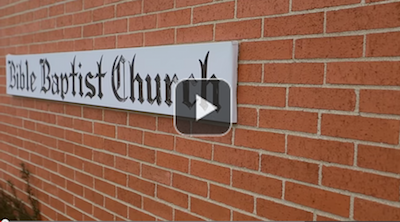JANUARY 17, 2016
THE CRUCIFIXION OF CHRIST (CONTINUED)
INTRODUCTION:
In part one of this study we considered Verses 15-32 under two main headings.
I. Pilate, in spite of his own protests that Jesus was innocent, ended up yielding to the Jews’ demand, and condemned Him to be crucified. (Verses 15-21)
II. Christ was at the appointed hour led away to the appointed place to be crucified between two thieves. (Verses 22-32)
As we now continue with our study of the crucifixion of Christ, we will be considering Verses 33-41.
III. CHRIST’S ABUSE AND DEATH WAS PROTESTED, AS IT WERE, BY THE SUN AS IT DID NOT GIVE ITS LIGHT, SYMBOLIZING HIS BEING FORSAKEN BY GOD THE FATHER. (VERSES 33-36) The crucified Savior was abused by the people, protested in nature, forsaken of His Father, and finally, honored by God.
A. HOW THE SUN PROTESTED THE DEATH OF CHRIST. (VERSE 33) The sun, being the very center of the universe, around which all else revolves; and which is the one source of light, heat, energy, and life, refused to shine, in protest to the fact that the Sun of Righteousness, Who is the true light and life of creation was being put to death. Note Spurgeon’s comment: “The sun covered his face and traveled on in tenfold night, in very shame that the great Sun of Righteousness should himself be in such terrible darkness.”
1. The cause of this darkness was not some natural phenomenon. It was no mere solar eclipse, as some suggest, for it lasted for three hours, and shed darkness over the whole land for that space of time.
2. An extraordinary light gave notice of the birth of Christ (Matt. 2:2), and therefore it was proper that an extraordinary darkness should notify His death.
B. HOW CHRIST RESPONDED TO THE EXTRAORDINARY DARKNESS THAT COVERED THE LAND. (VERSE 34) The event has been described poetically as God hiding His face.
1. After three hours, Jesus cried out, “My God, my God, why hast thou forsaken me?”
2. As the ancient poets would describe a display of divine wrath by the withdrawing of the sun’s light, so our Lord seems to have interpreted this awful blackness.
3. No tongue can tell of the sorrowful agony.
a) The extreme depth of His agony is signified in the loudness of His cry. “Jesus cried with a loud voice.”
b) The greatness of His agony and the incredible reason for it are expressed in His words, “Why hast thou forsaken me?”
4. Our Lord’s bitter cry was made in the words of Psalm 22:1. He even cried them in the tongue of their original human penman. “Eloi, Eloi, lama sabackthani.” In reading the psalm it is clear that the whole of it belongs to Christ. It is a Messianic psalm, much of which is a poetic and prophetic description of the awful events which we are presently considering.
C. HOW SOME WHO WERE PRESENT INTERPRETED JESUS’ CRY OUT OF THE DARKNESS, AND USED IT TO FURTHER MOCK HIM. (VERSES 35, 36)
1. Due to their misunderstanding of what Jesus cried in the Hebrew tongue, they thought that He called for Elias (Elijah).
a) What fools they were. Considering the extraordinary acts of God that they were seeing; why were they not crying out in fear?
b) Why would He call upon Elijah? He had before assured them that if He wished to be helped, God would, upon His request, dispatch more than twelve legions of angels to the rescue. (Matt. 26:53)
2. They used their misinterpretation of Jesus’ cry to further mock Him. “Let us see whether Elias will come and take Him down.”
3. Mark inserts in between the mistaken assumption and the mocking an unrelated incident, in which one ran and served Him vinegar with a sponge. John, however, fills in the needed detail, noting that, “After this, that the Scriptures might be fulfilled, saith I thirst,…and they filled a sponge with vinegar…and put it to his mouth.”
a) How many, many pangs of suffering He might have complained of, yet that the Scripture might be fulfilled in this detail, He mentions only this one, His great thirst.
b) What regard He had for the sacred Scriptures! Not a single word of divine prophecy would He allow to fail. (Psa. 69:21)
c) The heartless fool who responded to Jesus’ complaint with such cruelty had no idea that his actions had been foretold by Christ Himself many centuries before, when He said, “…and in my thirst they gave me vinegar to drink.”
4. All things now having been accomplished, seeing to the fulfilling of every detail of prophetic Scripture respecting Christ’s sufferings, only one thing remained to be done, and Christ, by an act of His own will, finished it.
IV. CHRIST’S DEATH WAS A MARVELOUS ACT OF HIS OWN WILL, WHICH WAS ATTENDED AND FOLLOWED BY MANY MARVELS. (VERSES 37-39)
A. HOW MARVELOUS THAT IN DYING OUR LORD HAD COMMAND OF HIS OWN SPIRIT. (VS. 37; LUKE 23:46; PSA. 31:5)
1. Ordinarily men are totally passive in the matter of dying. We have an appointment with death that cannot be either postponed of hastened.
2. Jesus was totally unique in this regard. He alone had power to either retain or surrender His life at will.
3. We can be quite sure that it was not mere happenstance that He surrendered His life at the exact time when the paschal lamb was to be slain.
B. ANOTHER MARVEL IN CHRIST’S DEATH WAS THAT HE SHOUTED IN VICTORY. (VERSE 37)
1. We have witnessed, as it were, the entire ordeal, which began the night before. It is now three o’clock in the afternoon. Crucifixion is a form of execution which slowly drains every ounce of strength from the body, and also renders one unconscious before life slips away. Yet, when Jesus was only seconds away for His last breath, He SHOUTED WITH A LOUD VOICE.
2. This was a shout of victory over the enemy. The Seed of the woman here delivered the head-crushing blow to the old serpent. The work of redemption which He came to accomplish was at last FINISHED. (John 19:30)
C. YET ANOTHER GREAT MARVEL IS THAT WITH HIS SHOUT, THE VEIL IN THE TEMPLE WAS SIMULTANEOUSLY RENT FROM TOP TO BOTTOM. (VERSE 38)
1. Christ’s death was the end of Judaism. Just as Daniel had predicted, Messiah the Prince would, in the midst of the seventieth week, cause the sacrifice and oblation to cease. (Dan. 9:27)
a) The handwriting of ordinances was nailed to the cross. (Col. 2:14)
b) The Jews did repair the veil, and tried to continue, but Christ’s death effectually put an end to that old system. This is the main point of the book of Hebrews.
2. Now, there is made an entrance into the holiest of all by the blood of the cross. The way of access to God is opened for all who will come to God by the way of the cross.
D. MARVELOUS ALSO IS THE FACT THAT SOME OF THE ROMAN SOLDIERS WERE CONVINCED AND CONFESSED, WHILE OTHERS WITH THE SAME EVIDENCE CONTINUED IN THEIR UNBELIEF. (VERSE 39; MATT. 27:54)
1. Distinguishing grace is always an amazement to us. (Matt. 11:25)
2. It seems incredible that any could have witnessed the things that happened, and heard the words of Christ and still remained in denial. Yet, the eyes of the Jewish leaders remained blind, while the eyes of these men were opened.
3. It remains so today. The truth softens the hearts of some, while the hearts of others are hardened by the same gospel.
V. CHRIST’S CRUCIFIXION WAS VIEWED (DOUBTLESS WITH GREAT SORROW) BY FRIENDS, WHO KEPT THEIR DISTANCE. (VERSES 40, 41)
A. EVEN THESE DEAR WOMEN HAD TO KEEP AT A DISTANCE FOR FEAR OF THE MOB. (VSE. 40)
B. SOME OF THESE WOMEN ARE IDENTIFIED, AND ARE FAMILIAR. (VERSE 41)
C. A NUMBER OF THESE WOMEN HAD FOLLOWED CHRIST AND MINISTERED TO HIM IN GALILEE. (VERSE 41; LUKE 8:2, 3)
Next week, if the Lord wills, we shall resume our study at Verse 42, and hopefully, be able to finish the chapter.


